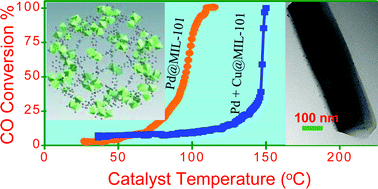Metallic and bimetallic nanocatalysts incorporated into highly porous coordination polymer MIL-101†
Abstract
This paper reports the development of a facile, general and effective approach, based on microwave irradiation (MWI), for the incorporation of a variety of metallic and


 Please wait while we load your content...
Please wait while we load your content...